The Iridology Assessment Generator Classic is an online form generator that covers most of the sectors in “Classical” Iridology analysis. This assessment tool can be utilized for an educational patient/client report that offers explanations of iris signs findings with recommendations based on nutritional, herbal, homeopathic and biochemical elements (mineral deficiencies).
There are ten steps in the Iridology Assessment Generator that include:
Step 1: Clinic-Practitioner details, patient-client information, iris photos and history. The email address used for your iridology research membership registration will be automatically applied. This email address will receive the generated results in both HTML and PDF document. It is possible to change the receiver email address as well.
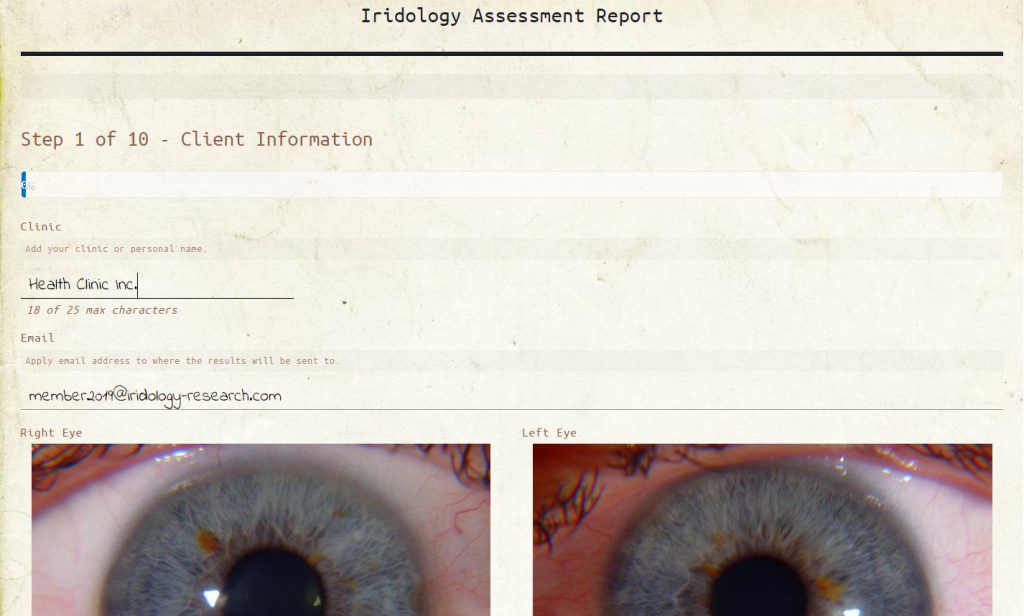
Note that all sections are optional. Only chosen analysis topics will be printed into report.
Step 2: Constitutional Type and Subtypes. There are 34 constitutional types and subtypes, including inclinations, predispositions and homeopathic constitutional therapies.
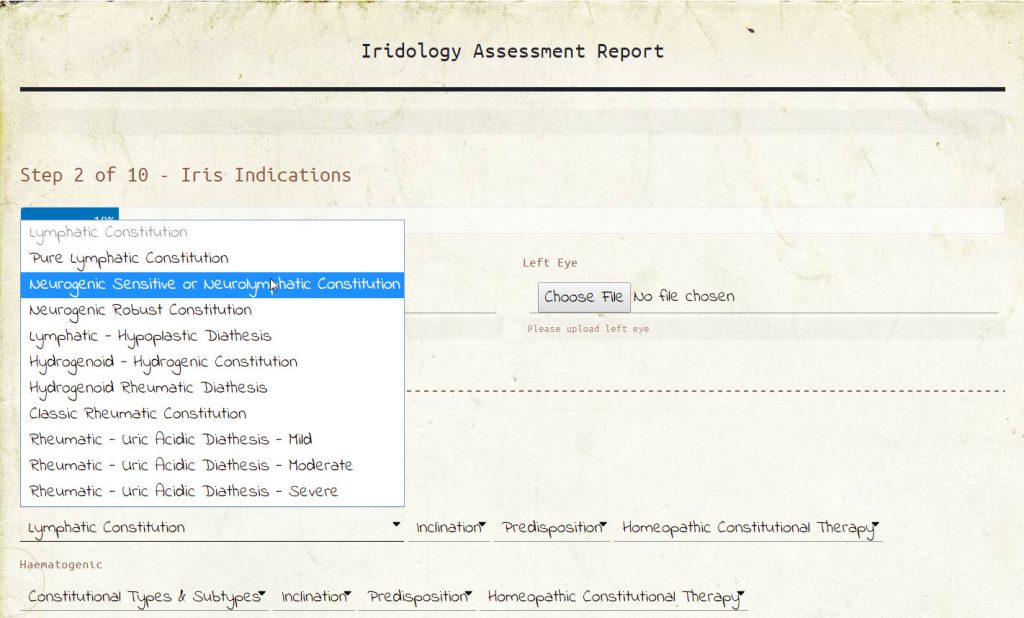
Step 3: Conditions for Consideration including explanation, herbs, nutrition and homeopathy. Iris sign conditions include:
A: Anemia in Extremities
B: Body Acidity
C: Catarrh/Mucous
D: Cerebral Anemia
E: Lymph Congestion
F: Nerve-Stress rings
G: Poor Assimilation
H: Radii Solaris
I: Sodium-Cholesterol
J: Underactive Skin
K: Venous Congestion
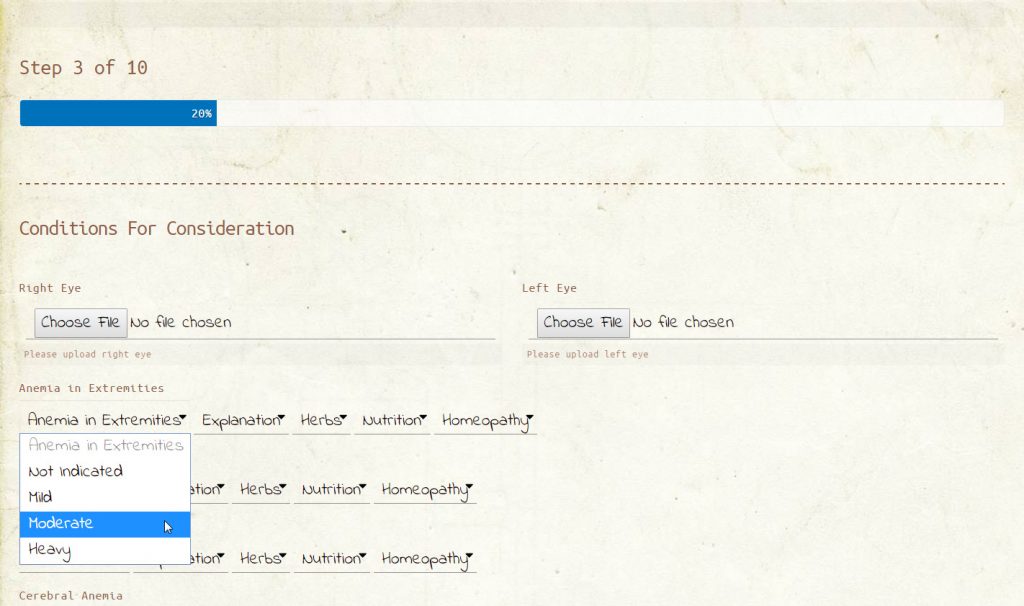
Step 4: Elimination Organs to Consider including explanation, herbs, nutrition and minerals (bio-chemical elements). Iris sign conditions include:
A: The Colon
B: The Kidneys
C: The Lymphatic System
D: The Lungs and Bronchials
E: The Skin
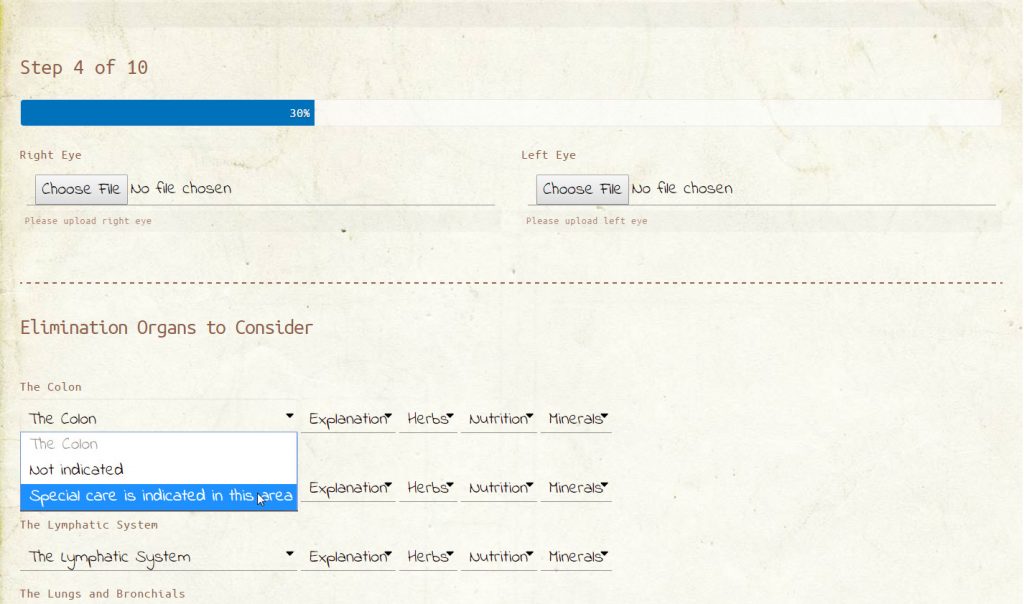
Step 5: Seventeen types of general organs and glands including explanation, herbs, nutrition and minerals (bio-chemical elements).
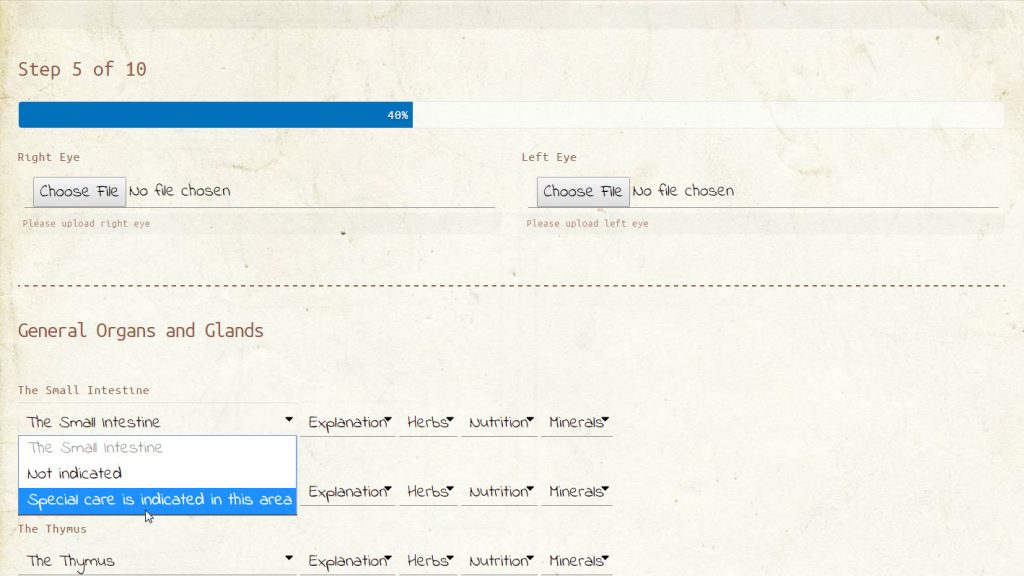
Step 6: The Collarette including explanation. Includes 11 types of collarette Shapes and 6 types of collarette Structures.
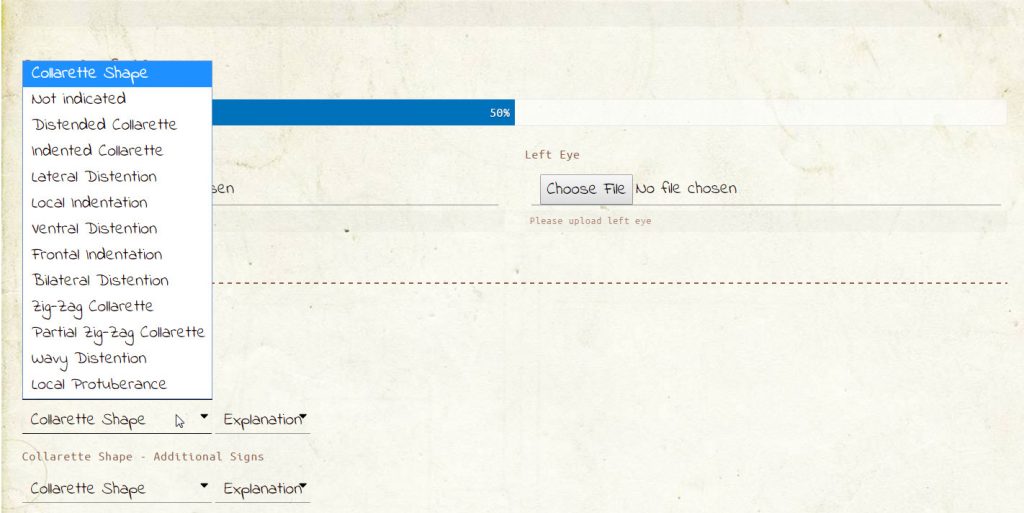
Step 7: Eleven types of Iris Pigmentation including explanations.
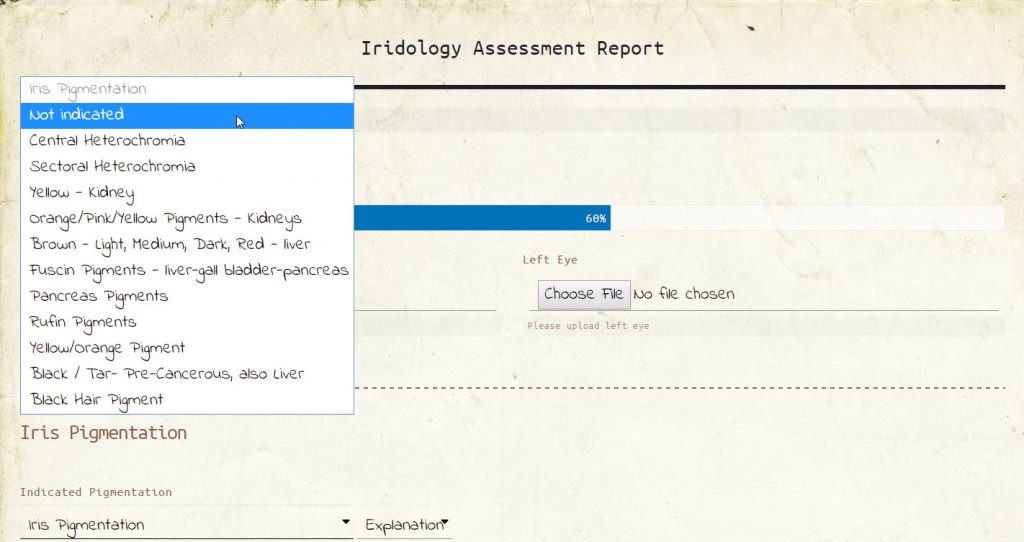
Step 8: Pupil assessments including explanations. Assessment includes 4 types of pupil size, eight types of pupillary deformations, twelve types of pupil decentrations and Multiformaties and six types of pupillary margin.
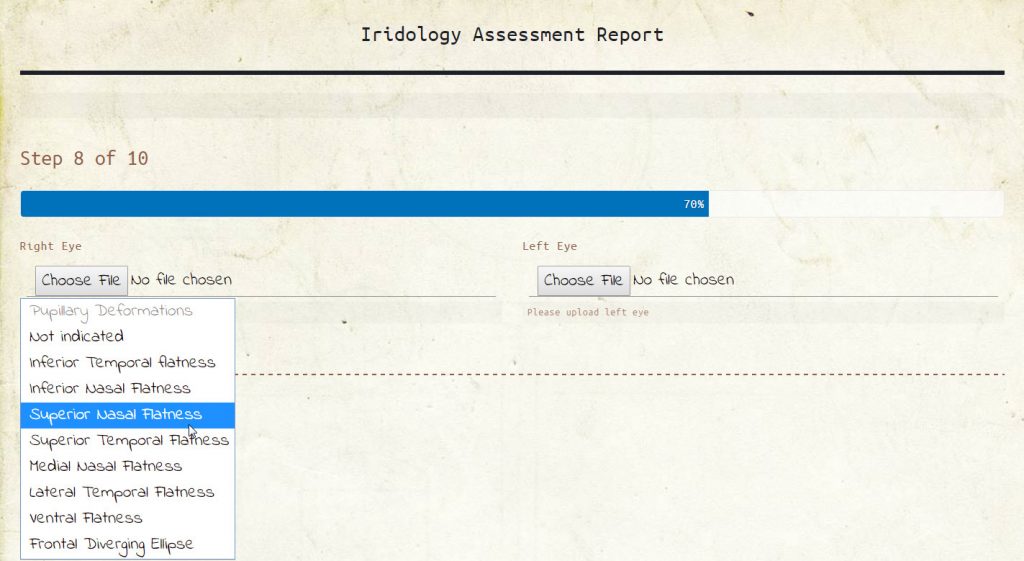
9: Brain Indicators including explanation, normal function, abnormal function, attributes and recommendations.
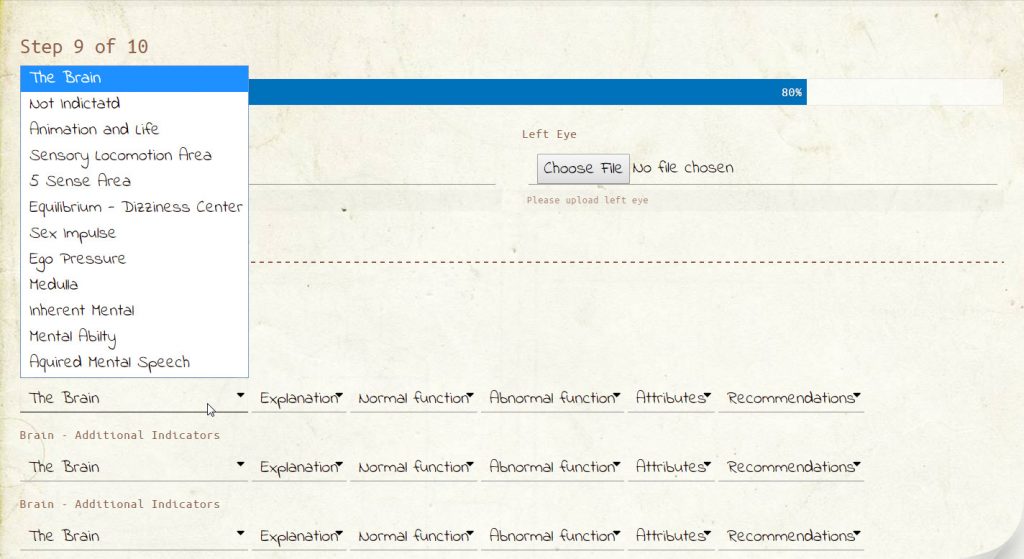
10: Iris Density, Additional Dietary Recommendations, Additional Notes, Additional Recommendations and submit report button for sending final report to the preferred email that was included in step one.
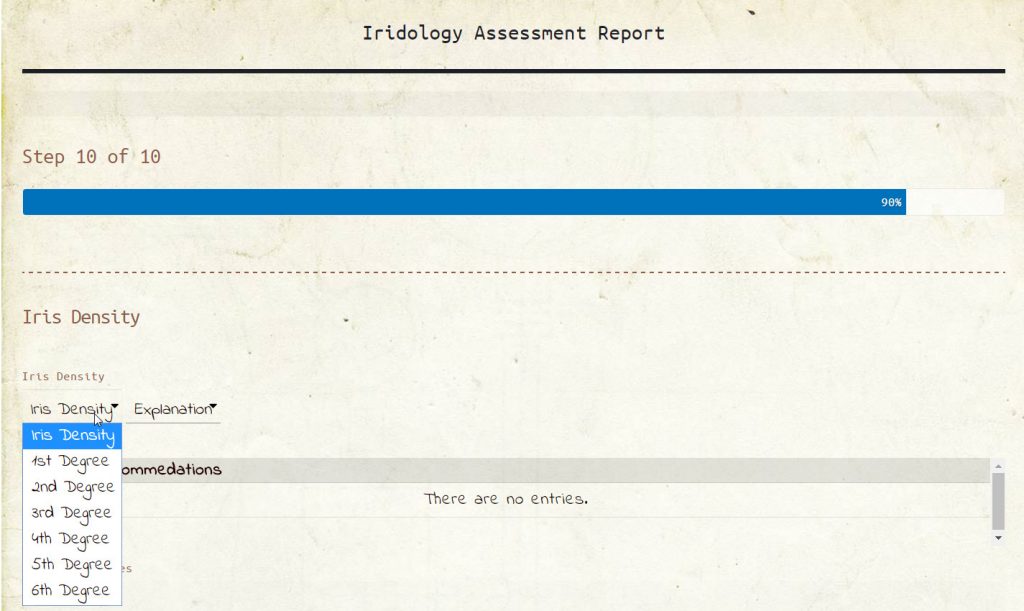
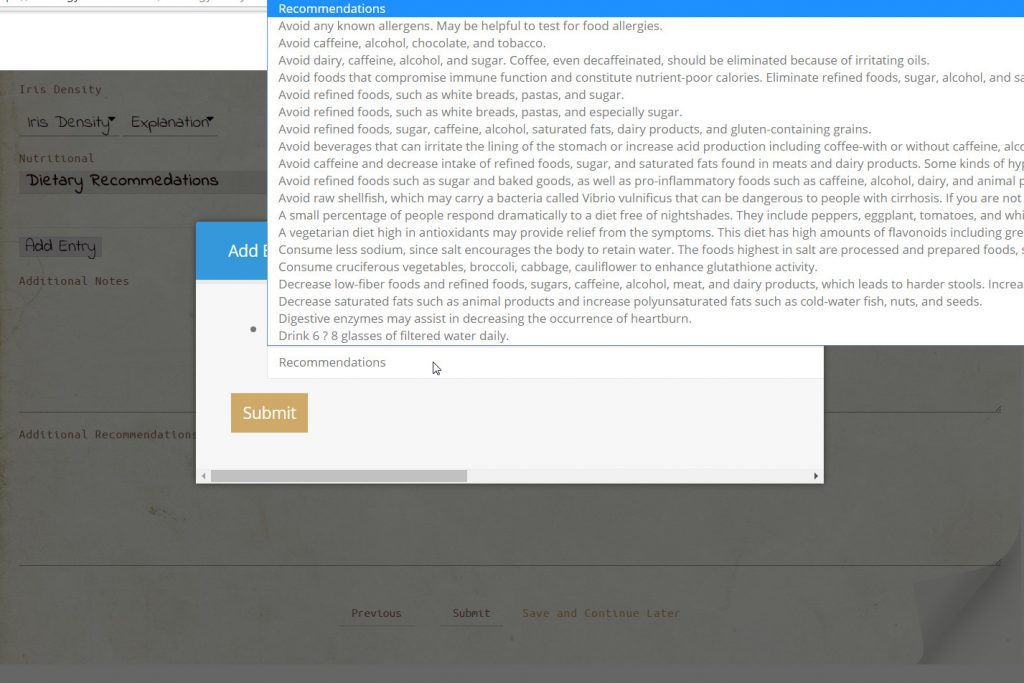
Important notes:
1: All fields are optional. Only work with the fields that you want to add to your final report.
2: You must drill down into each analysis topic to be added to report. This does take some extra time but is required to print all associated topic information.
3: The eye upload section is available in every step. This was included in the case you need to refer to the right and left eyes when working in a particular section step. It is best to delete the uploaded eyes after completed your assessment in various sections or they will be included in your final analysis report.
4: Be sure to use the correct email address in step one to receive the completed analysis report. If you do not receive your completed report, please check your spam folder.
If you are not a member of iridology-research.com and would like to test the Iridology Assessment Generator, please contact us and we will send you a link to the assessment generator for your review.
